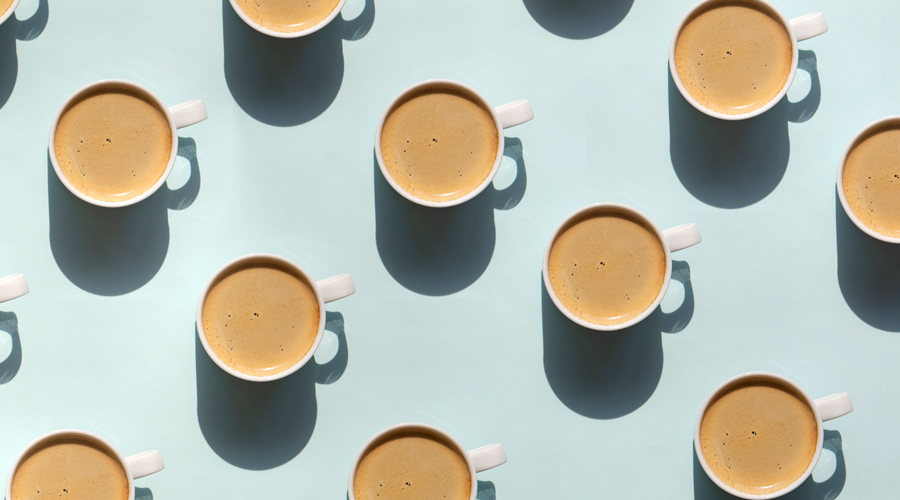With its art deco font and Jazz Age-inspired illustrations, the new Espresso Drinks stamps hark back to the heady days of early 20th-century cafe culture. Here are five facts about the revered Italian technique that helped fuel the era and steam-powers some of our favorite pick-me-ups today:
1. Espresso is a process, not a bean. Espresso is a specific method developed in the late 19th century and refined in the early 20th that “expresses” pressurized, extremely hot water through a “puck” of compacted coffee for about half a minute. Some say that the method was developed so workers wouldn’t dawdle on coffee breaks.
2. It’s the basis of all the stamps’ drinks. Besides the self-evident “espresso” stamp, it is a part of all the others: A caffe latte is espresso and steamed milk, with the balance favoring the milk; a cappuccino is equal parts espresso, steamed milk and a “cap” of foamed milk; and a caffe mocha is a caffe latte with chocolate syrup.
3. The machines evolved over time. The first espresso machine is credited to entrepreneur Angelo Moriondo and was demonstrated at the Turin General Exposition in 1884. Around 1906, Luigi Bezzerra improved the design and teamed with Desiderio Pavoni, who devised the first pressure-release valve. Cafe owner Achille Gaggia refined it further still, creating a prototype of the modern machine.
4. The technique is regulated by the Italian government. Because it is considered part of its cultural heritage, Italy regulates what qualifies as “Espresso Italiano”: Only certain beans, machines and workers can create it. More generally, good espresso is known in Italy by the “four M’s”: “miscela,” or the mix of beans; “macinazione,” the grind; “macchina,” the machine; and “mano,” the person making it.
5. Move over, Tang. In 2015, the International Space Station acquired its own espresso maker, the ISSpresso, designed for zero gravity. Its inaugural shot was imbibed by Samantha Cristoforetti, the first Italian woman in space. Cute demitasse cups are not an option out in the cosmos, but special plastic ones, molded to keep fluid in by use of surface tension, were designed for the occasion.
